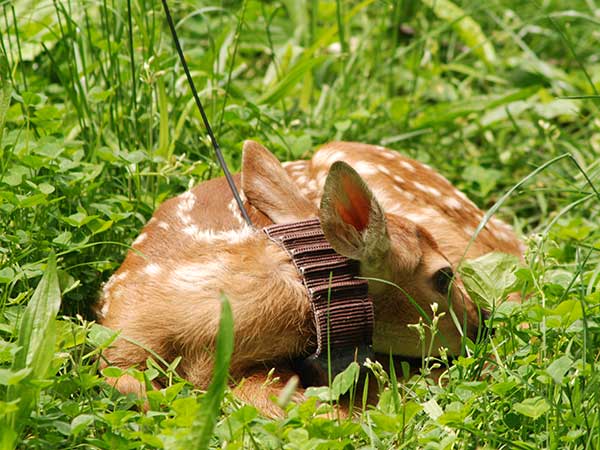By Louie Stout
 Rural Coyotes Prey on Fawns; Urban Deer are Thriving
Rural Coyotes Prey on Fawns; Urban Deer are Thriving
Remember that monster buck that was killed by a vehicle on Main Street in Mishawaka last November?
An interesting study by Ball State researchers indicates we see more of that in the future. Maybe not monster bucks, but deer/car collisions in urban areas.
The study, conducted in the Bloomington area by biology professor Tim Carter, offers insight as to why urban areas are becoming more inhabited with deer. The study showed that young deer are more than twice as likely to survive in urbanized areas as they do in rural outlays.
Part of the reason, says Indiana DNR urban wildlife biologist Megan Dillion, is that deer are adapting to urban areas much the same as geese and other seemingly wild animals. They have learned to escape hunting pressure in rural woodlands by ducking into town. Many of those become year-round homesteaders.
No big revelation there, right? South Bend Parks Department can attest to that.
But what was really an eye-opener in Carter’s study was that fawns born in urban areas have an extremely high survival rate compared to rural areas where coyotes prey heavily on fawns.
In the study, researchers captured and placed radio telemetry collars on 119 fawns and tracked them during the study.
Carter says hungry coyotes cause 92 percent of the deaths of eight-week-old fawns in rural areas. In urban developments, the leading cause of young deer mortality is vehicle collisions, about 17 percent.
“We were very surprised by the sheer number of fawns able to reach adulthood in an urban area than in rural areas,” Carter said in his report. “It’s because they are surviving at very high rates due to fewer predators and a lack of hunting.”
Dillion, who was a technician on the Carter study, said she figured it was uncommon to see a doe with twins or triplets in urban areas. That wasn’t the case at all.
“I would drive to an address where deer were reported and see animals lying in people’s yards and flower gardens,” she said. “I could walk within a few feet or them. They become very acclimated to humans and traffic.”
While Bloomington may be an extreme case given the amount of woodland habitat that surrounds the college community, Carter believes the problem will continue to manifest throughout Indiana.
“Simply, the deer are having young ones that are able to survive in large numbers and then breed in a never-ending cycle,” he wrote. “The numbers of white-tailed deer will expand at a high rate unless such communities manage to control the populations. It is already a hot topic because people are tired of dealing with the animals that seem to be everywhere and causing problems.”
Dillion said the Indiana DNR’s solution is to find ways to get hunters safe access to those urban areas.
“But it’s kinda on hold now because we haven’t replaced our deer research biologist,” She said. “Once we do, we will examine ways to deal with this growing issue.”
Remarkably, Indiana has been without a deer research biologist for over a year. Dillion wouldn’t elaborate, but other DNR sources have said that, on more than one occasion, potential hires found jobs before the state government could approve the hiring.
You’d think state officials would make this a priority, but then, fish and wildlife activities have always been the step child of Indiana government.


